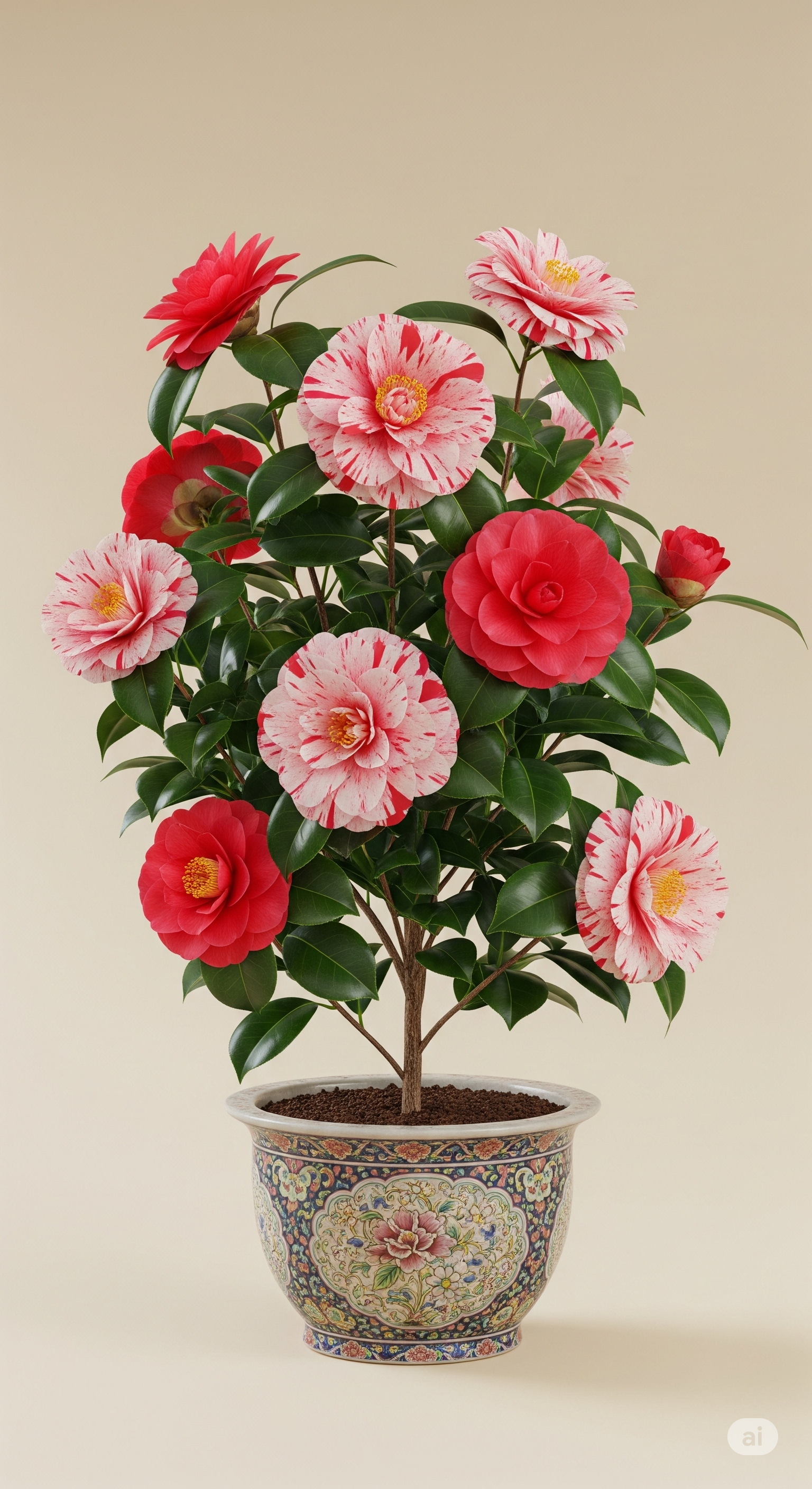Camellia

Scientific name: Camellia japonica
☘️ Toxicity: Safe for cats
☀️ Ideal light: Bright indirect light to partial shade
💧 Watering: Moderate; keep soil moist and well-drained (slightly acidic)
The Camellia is an elegant shrub known for its showy flowers ranging from white to deep red. It thrives in mild climates, preferring bright indirect light and slightly acidic, organic-rich soil. A symbol of grace and longevity, it is also safe for cats and an excellent choice for shaded balconies or gardens.
Essential care
- Light: Prefers bright indirect light or partial shade; avoid direct afternoon sun.
- Water: Water regularly to maintain moist soil, reducing frequency in winter. Avoid standing water.
- Substrate: Rich, slightly acidic, and well-draining — mix of peat, compost, and pine bark (pH 5.5–6.5).
- Temperature: Ideal range between 10–25 °C (50–77 °F). Sensitive to extreme heat and frost.
- Fertilization: Apply acid-loving plant fertilizer every 30 days during active growth, stopping during flowering.
- Maintenance: Prune lightly after flowering to remove dead or crossing branches.
Pests and how to handle them
- Scale insects and aphids: Control with neem oil or mild insecticidal soap.
- Fungal leaf spots: Improve air circulation and avoid overhead watering.
- Bud drop: Common if exposed to sudden temperature changes or drought stress.
Propagation
- Cuttings: Take semi-hardwood cuttings in summer, using rooting hormone for best results.
- Layering: Bend a low branch to the ground, cover a section with soil, and separate once rooted.
Cat safety
- Classification: Non-toxic to cats (confirmed by ASPCA).
- Best practice: Avoid using chemical fertilizers or pesticides in indoor pots.
- Bonus: Its dense foliage creates a natural privacy screen in pet-friendly gardens.
💡 The Camellia is a traditional Japanese garden symbol, representing admiration and eternal beauty — a serene addition to any green corner.
Frequently asked questions
- Does it bloom indoors? Yes, with good light and mild temperatures during winter and spring.
- Why are buds dropping? Often due to excessive dryness, heat, or sudden light changes.
- Can it grow in pots? Yes, provided the pot has good drainage and slightly acidic soil.
Quick checklist
- 🌤️ Bright indirect light
- 💧 Keep soil moist and well-drained
- 🌱 Slightly acidic substrate
- ✂️ Light pruning after flowering
- 🐾 Safe for cats